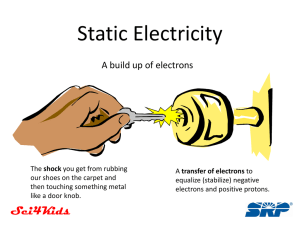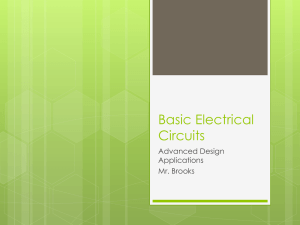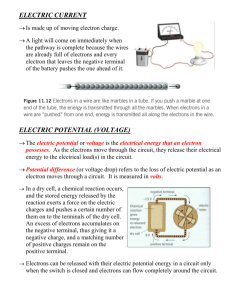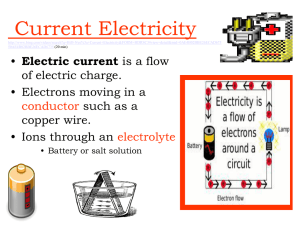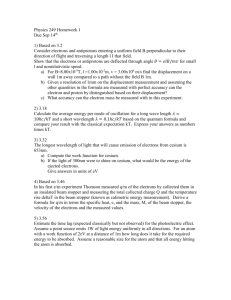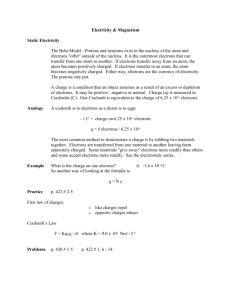electrons - Colyton High School
advertisement
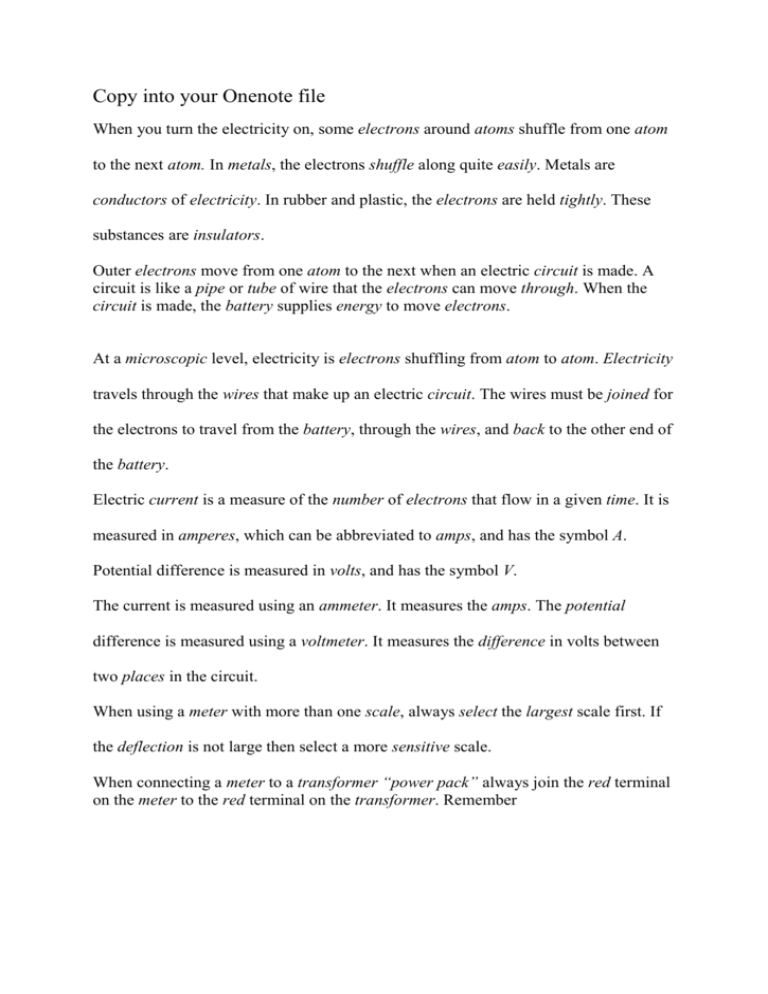
Copy into your Onenote file When you turn the electricity on, some electrons around atoms shuffle from one atom to the next atom. In metals, the electrons shuffle along quite easily. Metals are conductors of electricity. In rubber and plastic, the electrons are held tightly. These substances are insulators. Outer electrons move from one atom to the next when an electric circuit is made. A circuit is like a pipe or tube of wire that the electrons can move through. When the circuit is made, the battery supplies energy to move electrons. At a microscopic level, electricity is electrons shuffling from atom to atom. Electricity travels through the wires that make up an electric circuit. The wires must be joined for the electrons to travel from the battery, through the wires, and back to the other end of the battery. Electric current is a measure of the number of electrons that flow in a given time. It is measured in amperes, which can be abbreviated to amps, and has the symbol A. Potential difference is measured in volts, and has the symbol V. The current is measured using an ammeter. It measures the amps. The potential difference is measured using a voltmeter. It measures the difference in volts between two places in the circuit. When using a meter with more than one scale, always select the largest scale first. If the deflection is not large then select a more sensitive scale. When connecting a meter to a transformer “power pack” always join the red terminal on the meter to the red terminal on the transformer. Remember
